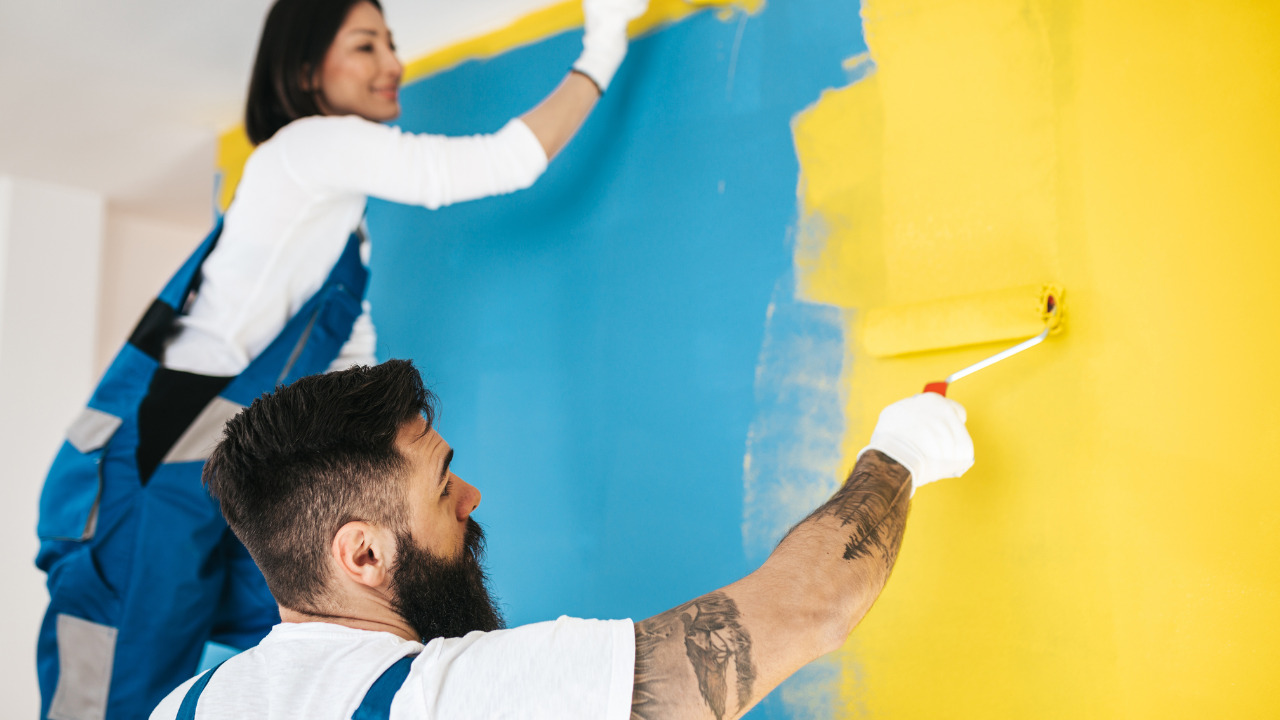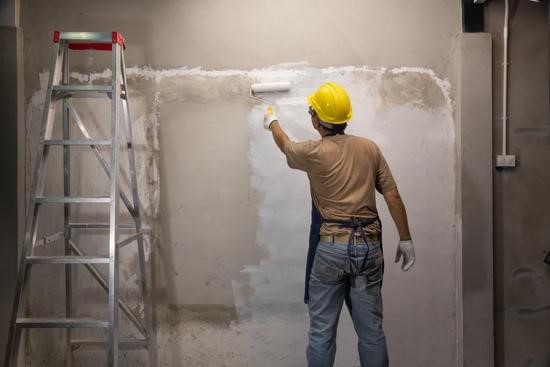Paints differ in their qualities and are designed for different uses. Interior paint is designed to be cleaned, stain-resistant, and easy to clean. Exterior paint is designed to resist fading and mildew. It’s critical to understand the distinctions between the two before beginning a painting project and selecting the appropriate paint.
You’ll need to study a little about paint chemistry to comprehend the differences between exterior and interior paints. Continue reading to learn about the primary components of all paints.
Table of Contents
The Basic Components Of Each Paint Are Different?
Pigments, solvents, additives, and resins are all components of paints. Water is used as a solvent in latex paint, while mineral spirits are used in oil-based paint. The solvent is responsible for making the paint wet.
The solvent will evaporate as the paint dries. However, pigments and additives are remaining and long-lasting components of paints. Pigments help to define the color of the paint.
The key difference between the exterior and interior paint is the amount and type of resin employed. The pigment is adhered to the surface by resin, an organic substance. A softer resin, such as that found in exterior paints, is appropriate for this application since it may make the paint appear healthy even if the surface beneath it is touching and expanding.
It also reduces the likelihood of paint chips, peeling, and fading. Interior paints benefit from more stiff polymers.
Exterior Paint: An Overview
Exterior paint is designed to withstand harsh weather while resisting mold, mildew, fading, cracking, and chipping. On the other hand, interior paint is designed to resist stains and maybe scrubbed clean without causing damage. Interior paint is also manufactured with ingredients that are less harmful to the respiratory system.
Exterior paint is designed to paint the outside of various structures and contains ingredients that make it waterproof. Environmental adverse weather conditions are no match for it. It’s also designed to withstand years of direct sunshine without fading or cracking.
When the wind blows twigs and other debris against your home, it’s also incredibly durable to avoid chipping and flaking.
Extra resins and chemicals are utilized to make the paint more durable. While the paint is drying, these will produce outgassing. The majority of the off-gassing will occur within a few days, although it will take several years to complete.
Interior Paint: An Overview
The purpose of interior paint is to cover the inside of your home. It’s not as long-lasting as exterior paint, but it can take scrubbing and washing on occasion. However, it is not waterproof and will not endure the elements.
Interior paint is low in hazardous compounds because it is intended for indoor usage. There is little to no outgassing. Organic pigments are used in interior paints to avoid harsh chemicals. Those organic hues will fade soon in direct sunshine. They’re more prone to cracking and flaking as well.
What Makes Interior Paint Different From Exterior Paint?
While the interior and exterior paints are intended to add color and character to your house or company, there is a distinction in how they do it. Interior paint is made to resist stains and scouring, making it look fantastic even after spills or cleaning.
Outside paints are meant to keep your home’s exterior looking its best by resisting fading, cracking, mildew, and other problems caused by exposure to the environment. Here’s how interior and exterior paint differ when it comes to pigments, resins, solvents, and additives.
Additives
Interior paints don’t need as many additives because they don’t have to deal with potentially dangerous circumstances. However, exterior coatings must withstand a variety of weather conditions, wind storms and other environmental conditions.
Additional compounds that assist the paint to withstand fading, handle fluctuating temperatures, and even prevent cracking are utilized to help with this. Mildecides are also used in exterior paints to inhibit the growth of mildew, mold, and algae.
Pigments
Pigments, or finely ground ingredients, are used to paint its color. There are two types of pigment, including organic pigment and synthetic pigment. Organic pigments are brighter than synthetic pigments.
Organic paints are safer to breathe and have no unpleasant aromas, so they’re ideal for interior painting projects. On the other hand, organic pigments might fade in the sun, making them unsuitable for outdoor work. Interior paint uses organic pigment, while exterior paint uses synthetic pigment.
Durability
Exterior paint is designed to survive years of exposure to the elements. It’s also manufactured robust enough not to chip off when it comes into contact with things like twigs blown against your house.
As a result, it lasts far longer than interior paint. On the other hand, interior paint is rather long-lasting and can tolerate scrubbing and cleaning regularly.
Resin
The paint contains resin, which bonds the pigment to painted surfaces. Acrylic, epoxy, and silicone are the most prevalent resin materials. Because exterior paint is exposed to the elements, the resin it contains must be durable, allowing it to change as the material it covers expands and contracts in response to changing temperatures.
Adhesion Power
Paints for the interior and exterior have good adherence. On the other hand, exterior paints adhere well enough to resist all types of bad weather, a claim that interior paints cannot match. Exterior paints, on the whole, adhere better and last longer.
Final Thoughts
When it comes to selecting the appropriate paint for your interior or exterior painting work, there is a lot to consider. It’s preferable to use paint that’s specifically designed for the surface you’re painting, whether it’s inside or out. No wonder, you can always use interior or exterior paint to eliminate all the uncertainty.





